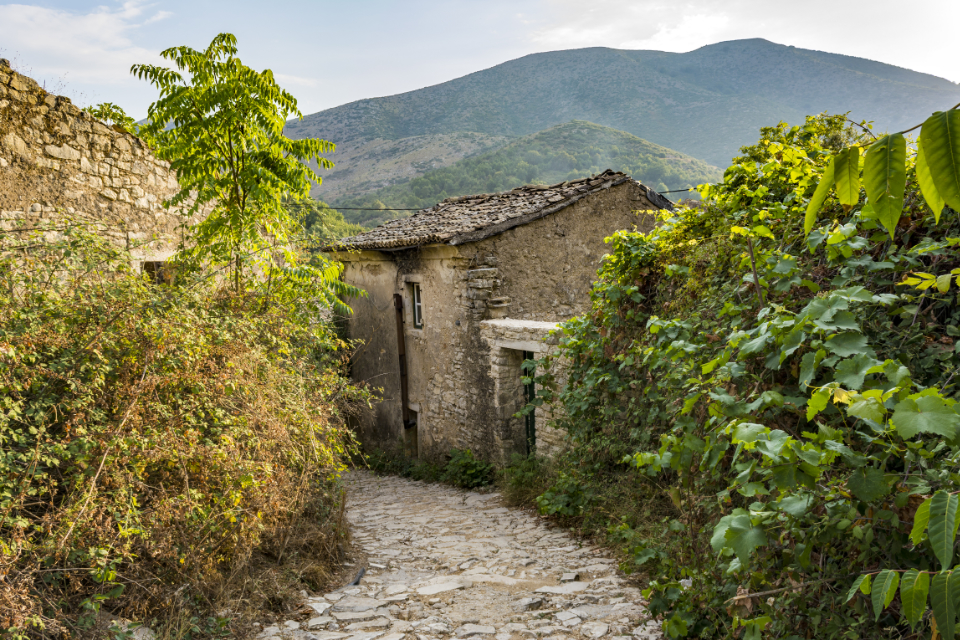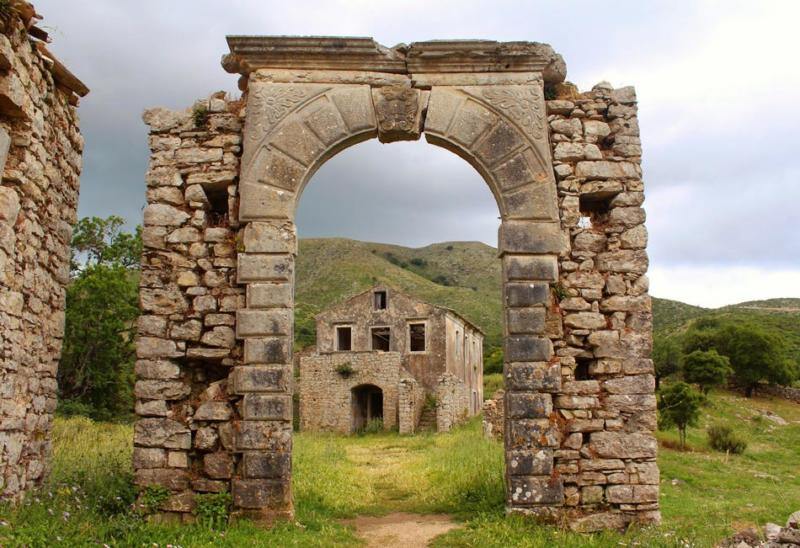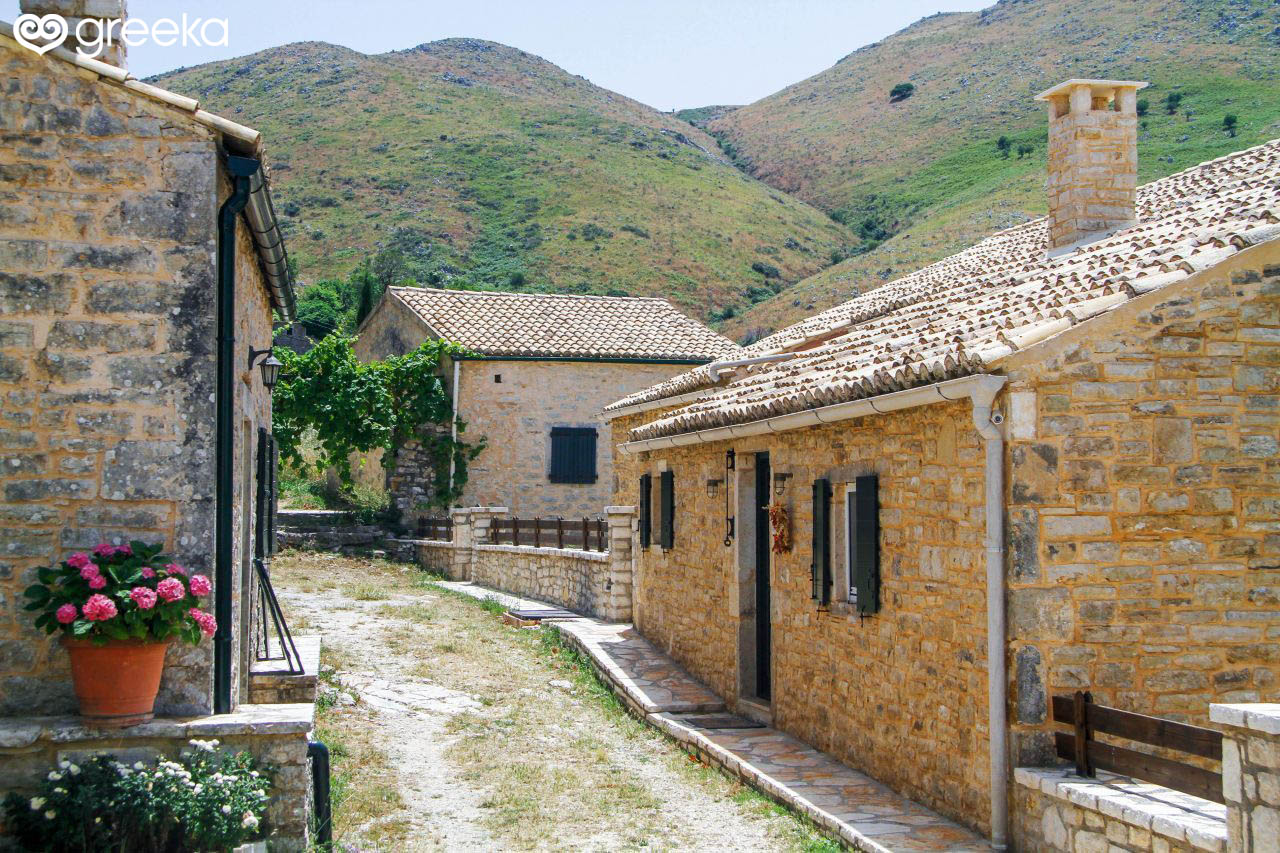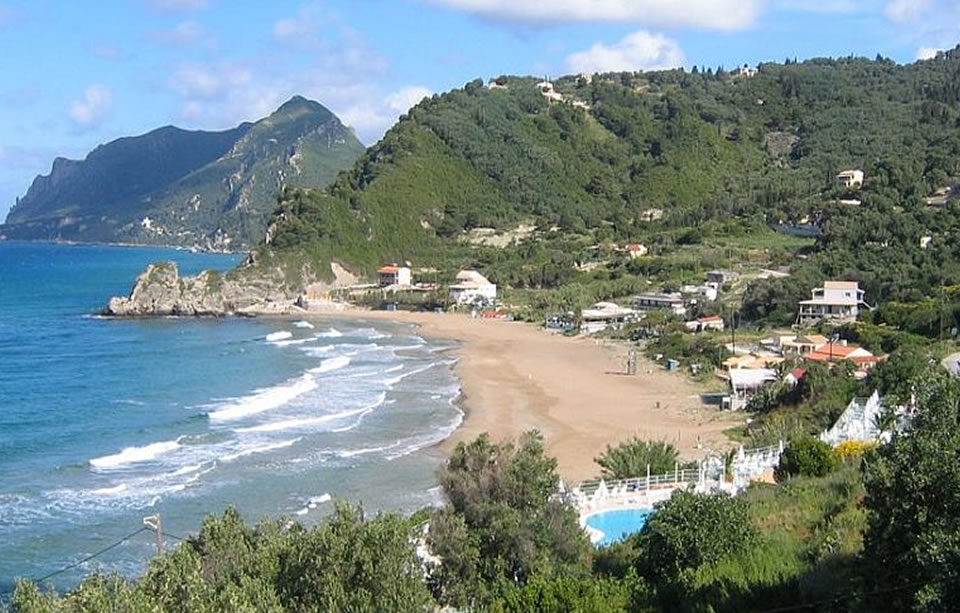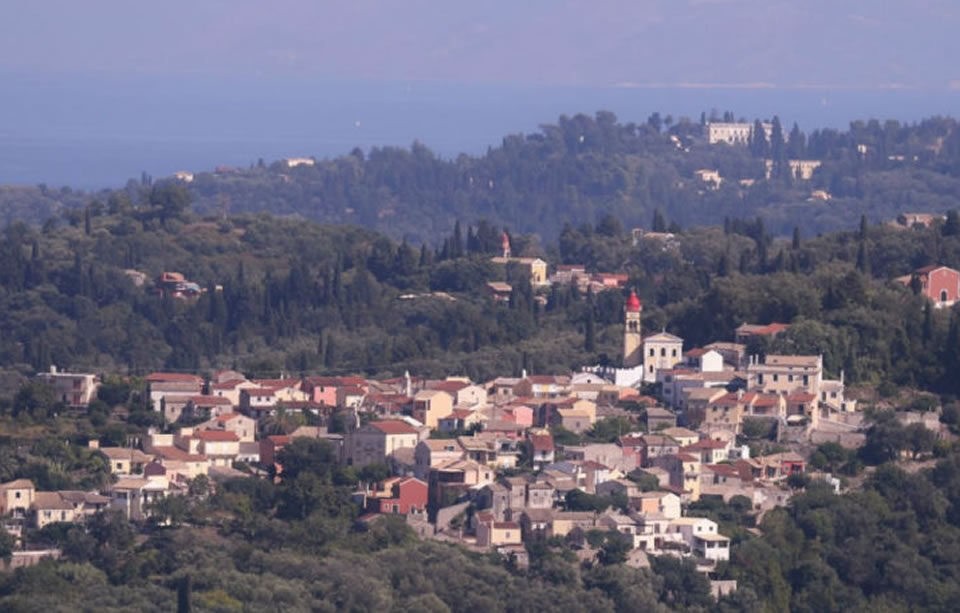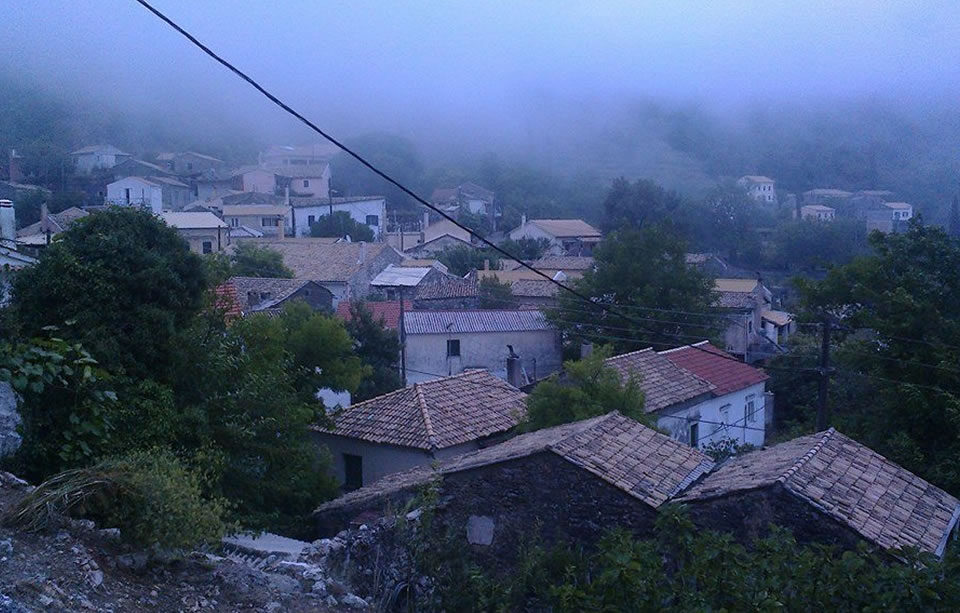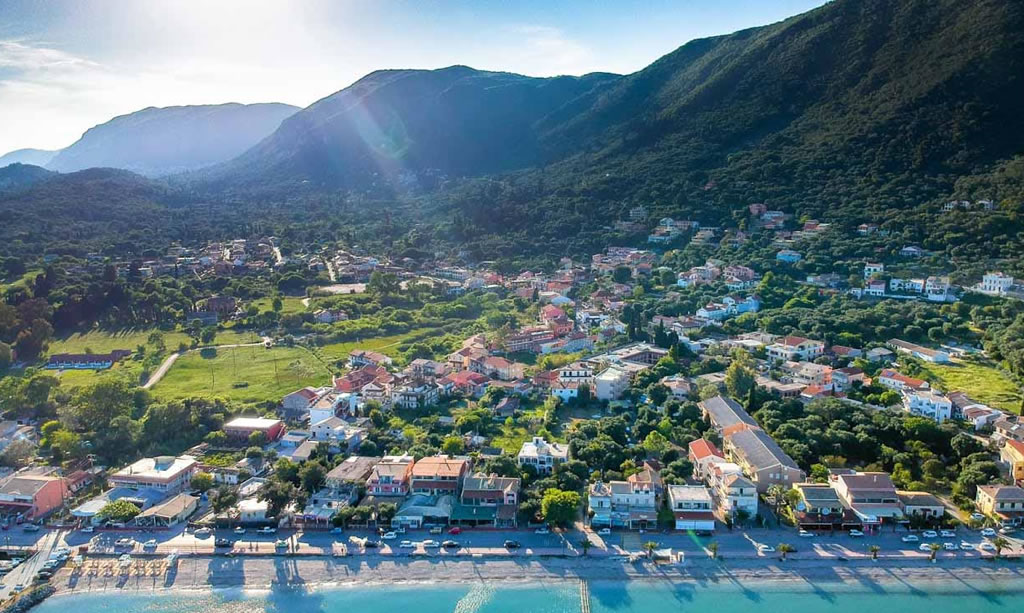
Ipsos
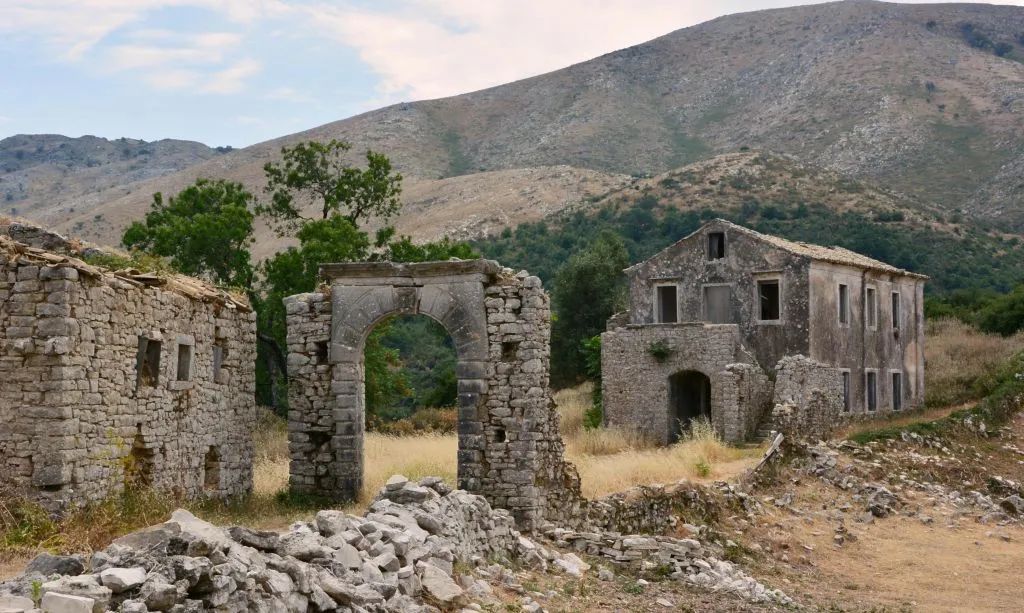
It is the most impressive sample of the old life in Corfu. A Venetian village, with ancient roots, with stone mansions, many churches at the foot of Pantokratoras mountain at 450 m. altitude. It was created in order to avoid the threat of pirates and for this reason it is protected by mountains.
1.How many inhabitants does the village have?
There are no permanent residents in the village, only some families who have a house in the settlement and visit it for recreational purposes. Also, there is a guesthouse that is rented out in the summer.
2.What jobs do the residents do?
-
3.What products are produced in the area?
Honey and dairy products are produced in the area for resale. Of course, other types of products are also produced for personal consumption. Such are wine and vegetables.
4.Is there someone who sells products?
In the village, there are five taverns that operate daily in the summers and on weekends in the winter. Also, there is a beekeeper who sells honey on his premises.
5.If yes, is the point of sale visitable and how many people can it accommodate?
The point of sale of both the taverns and the beekeeper is visitable. The taverns can serve more people in the summer than in the winter and this is because the weather allows service in the outdoor areas. The size of the shops varies of course but in any case, the taverns can serve a few people in the winter. The beekeeper welcomes his customers to the apiary and like any family business can serve a few customers at a time. The shepherds trade their products after agreeing with the customer.
6.Are there vineyards in the area?
There used to be more when there were permanent residents in the village. Now the vineyards are used for small wine production and also for their shade in the so-called pergolas. There are no professional winemakers.
7.If yes, what varieties are grown?
-
8.Is there a lake, river or waterfall?
There is no wetland in the village. However, on the path that leads to the settlement of Krinia there is the pit of Parigori which swells after rainfall.
9.Is there a point with acoustic peculiarity [e.g. reed bed, gravel, stream with nightingales etc]
Near the village is the cave of Gravas located in the settlement of Loutson at an altitude of 300m. It is a cave with vertical walls with a flat and accessible ground. The path leading to the point is downhill. Of course, there the acoustics are special. Also, on the paths leading to Pantokrator there are points with special acoustics when someone is between the slopes.
10.Around the village what animals are there, what season and at what points?
1.birds,
2.reptiles,
3.otters, rabbits, foxes,
4.frogs etc
4.1. Hawks, pigeons, crows, jays, crows, all year round. In addition to these, migratory birds come mainly woodcocks, thrushes, rednecks, partridges, blackbirds, nightingales and swallows. During their breeding period, all pigeons nest inside the cave of Gravas.
4.2. Tree frogs, blind snakes, snakes, lizards, lizards, during the summer season at various points.
4.3. Rabbits, foxes, weasels, hares, jackals, porcupines all year round throughout the village.
4.4. Otherwise, in the village there are herds of cows, sheep and goats that graze on the slopes around the village. Also, in the spring we are given the opportunity to enjoy many species of butterfly.
11.What does the vegetation of the area include, what season and at what points?
1.Flowers
2.Edibles [cabbage, mushrooms, tea, chamomile, oregano, caper, figs etc]
3.Trees and shrubs
3.1. Wildflowers (daisies, feathers, agrimony, ornithogala, soap herbs, burantzes, senecia, anemones, etc.), mainly in the spring season, scattered throughout the village.
3.2. Mushrooms, cabbage, mountain tea, sage, oregano, thyme, fig trees, walnut trees, chestnut trees, cherry trees, cistus, balsam herb, fennel, asparagus, etc.), in the spring mainly. The vegetables that vary are found in winter but different species of them. The herbs and herbs are mainly in the areas leading to a lower altitude.
3.3. Almond trees, caper bushes, oak trees, ash trees, cypress trees, heather, apple trees, laurels, oak trees, etc.), the trees and shrubs are scattered throughout the village. It is worth mentioning at this point that the flora of the village has changed over the last thirty years due to climate change. The mountainous soil and the climatic conditions of the area had led to the creation of oak forests while trees that fed the inhabitants could thrive. There were few cultivable fields and olives were grown in the surrounding areas. Olives did not thrive in the village. However, in recent years, due to the fact that the climate is now milder, olive trees have been planted. Also, the landscape has changed due to the fires that break out in the summers and have negatively affected the forest areas.
12.How many churches are there and which ones?
In the village, there are eight churches. They are basilicas of the Ionian type and two of them are road domes. As we enter the village we see the following in order: 1. Saint Athanasios, located about 500 meters before the entrance of the village. It is a private temple of the Syriotis family. 2. High Theotokos, it is a ruined temple, built on a hill and belongs to the Kormaris family. 3. Saint James the Persian, located at the entrance of the village. Recently the temple was restored and frescoes were revealed. The bell tower of the temple is emblematic and is the entrance to the courtyard of the temple and one of the most famous and photographed points of the village. 4. Saint Paraskevi, private church of the Dimitra and Koutsouri families. 5. Saint Panteleimon, a ruined temple that belongs to the parish of Loutses. 6. Saint Spyridon, a private church of the Poulos family. 7. Theotokos of Life-giving Spring, belongs to the Salvanos family. 8. Saint Nicholas of Petra, located in Pera village and belongs to the parish of Peritheia. The churches were of utmost importance to the village and in fact one theory for the origin of its name is based on their existence (peri + god) while another on the view of the village (peri + view). Each neighborhood had its own large church. The main village had Saint James the Persian and Pera village had Saint Nicholas of Petra. Each family had its own temple and its own priest who was a member of the family. In 1781 there were 18 priests and many chanters and monks. The large number of churches is justified by the tax exemption enjoyed by their owners. Also, they were created for reasons of charm. Of course, the religious feeling was not lacking, which the conquerors of the village had exploited, threatening the uneducated villagers with excommunications if they did not do what they imposed on them.
13.Is there any festival, procession or other event and when?
In the village, a procession is held every year in honor of the Virgin Mary on the last Sunday of July. The custom started in 1863 when the first procession took place to help the Virgin Mary rid the residents and especially the children of an epidemic that threatened them (most likely it was diphtheria). The procession starts every year either from Saint James the Persian or from Saint Nicholas of Petra. The icon of the Virgin Mary is carried around the village at a distance of about one kilometer.
14.Where does the water of the area come from?
The village is connected to the municipal water supply network. Of course, until recently the well was used which provided the necessary water for survival to the residents.
15.Are there public sources or taps with drinking water?
The source of the village is still visitable and one can drink water.
16.Is there a point of historical interest?
The whole village has a special historical interest as it is an abandoned settlement which hides many historical elements for the time when the village was buzzing with life. A visitor must definitely pass by the Old School (former Skordili mansion) and admire its entrance as well as the walk which was part of the fence and still dominates revealing the coat of arms of Skordili.
17.Is there a bridge, threshing floor, olive press or other point of interest?
There are scattered elements of everyday life of the past in the village. A walk among the houses and the ivy that surrounds them is enough to take the visitor back in time. Objects of daily life are either inside the deserted houses or in the taverns and renovated houses of the village. Among these objects is the sundial located on the wall of the old town hall in the village square. Also, there are outside the village some threshing floors which have been created with the technique of dry stone.
18.Did someone famous live or pass through here?
-
19.Is there anyone who comes from the village and became famous elsewhere?
Old Peritheia is the birthplace of Christos Tsirigotis, the first Greek psychiatrist who was born in 1841 and also of Philippos Vlachos, this ingenious and dedicated to the arts man who is responsible for the publication of the work of Dinos Theotoki. Diomedes Vlachos, also a man of arts and letters was born in Old Peritheia in 1953. He was a scholar of Solomos and belonged to the circle of the magazine Porphyra. Also, Ioannis Sarakinos (I.S. Peritheiotis), a philologist teacher and poet came from Old Peritheia. Also, from Old Peritheia came Major General Georgios Salvanos whose presence was decisive in the war against the Germans.
20.Do you remember any old story that your grandparents used to tell you?
In the village, the young people enjoyed pranks. One of them was that some young people had tied the bells with a rope that they had pulled up to their houses and they were ringing them during the night. In Old Peritheia, there were rumors of ghosts. Therefore, most residents were very scared at the sight of the bells ringing on their own. Another case was that they exchanged between the two sides of the village (the village consists of two parts: the main village and the other village) the saddles from the horses. Also, they took the tables and chairs from the shops and hid them at the entrance of the village during the night. Of course, the most shocking descriptions are those that refer to the daily life of people then. My grandmother always talks with great nostalgia about her life in Old Peritheia as a young woman and the nights when they all sat together in the forum to sing accompanied by musical instruments. There was a climate of joy and exultation when the residents were in the village in the summers.
21.Is there any special custom?
Apart from the procession that takes place every year, no other custom has survived. In the past, on the day of the procession, on August 6th (feast of the Monastery of Pantokrator) and also on August 15th, people gathered in the forum where a big celebration took place.
22.What foods do you usually eat?
The foods that Peritheians preferred and still do are the following: tsigaréli with wild herbs, rooster pastitsada, bourou bourou soup, sofrito, cheese pies, herb pies, neratzosalata.
23.Is there any local peculiarity in your cooking [e.g. neratzosalata]?
The cooking of Old Peritheia follows the prescriptions of the Mediterranean and more of the Corfiot cuisine. Of course, neratzosalata, with its sweet and sour taste, is a special feature of our cuisine as well as the use of local herbs.
24.Is there any cultural, musical, dance, theatrical or other association?
In the village, the Union of Peritheians “Philippos Vlachos”, a cultural association with intense cultural activity mainly (theatrical performances, organization of barkarola, dance department, choir, etc.) operates. Also, in the village of Loutses, the Cultural Association of Loutses operates.
25.If yes, what actions does it have and when do they take place?
The barkarola takes place every year on August 7th on the beach of Agios Spyridonas Peritheia. The theatrical performances take place during the spring. Also, actions are taking place in the old village either for star observation, or for book presentations or other events mainly in outdoor spaces.
26.What would you like the foreigner to know about you?
Visitors to the village should know that it is a mountainous settlement at the foot of Mount Pantokrator at an altitude of 450m. The village is rich in historical elements. Initially, we must mention that it was created to avoid the threat of pirates and for this reason it is protected by mountains. The sea is only visible from specific places that served as observatories. Unfortunately, we do not know exactly when it was created. The first reference to Old Peritheia is made in a golden bull of the Despot of Epirus Michael II in 1246 and we conclude in this way that the settlement had been created before that. Initially, it was the permanent residence of the people and over time it ended up being their summer residence. In winter they descended to the surrounding settlements. At the peak of its period, it became the capital of the municipality of Kassopaeans (1866-1912) and the residents reached 1100. The village had a town hall, a police station and a municipal school. The settlement declined in the mid-20th century due to the choice of the majority of young villagers to engage in tourism and move near the beach. The village consists of two neighborhoods: the main village and the Pera village which are separated by a stream. Old Peritheia has a special architecture with clear Venetian elements that one can admire walking on the stone paths. Despite the distance of the settlement from the center of the island, urban rather than rural elements are observed in its urban composition. In the main village one would find the forum, the only square of the village, public services and houses while the Pera village consisted exclusively of houses. In the settlement, a total of 135 buildings have been recorded which include churches, ground floor houses, two-storey houses and 6 mansions. In 1980, Old Peritheia was characterized by ministerial decision as a landscape of natural beauty while in 1996 by decision of the Ministry of Culture it was declared a historic preserved monument. In addition to historical interest, the area has rich vegetation and numerous paths that lead either to more mountainous points or to more lowland ones. So, it can attract the attention of those who wish to do some hiking or just a walk in nature. Also, it is a hospitable area and a discussion with the locals will solve all the visitors’ questions. After all, in our village there is also the possibility to stop for a rest in one of the taverns and to try local products such as honey.

